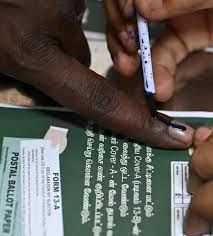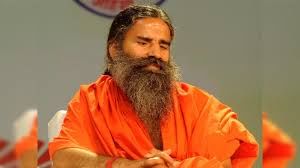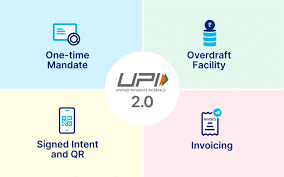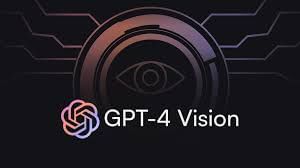UPSC Daily Current Affairs - 12th April 2024 | Current Affairs & Hindu Analysis: Daily, Weekly & Monthly PDF Download
GS-I
The Azad Hind Government
Subject: History

Why in News?
Recently, Kangana Ranaut made a statement suggesting that Subhas Chandra Bose, and not Jawaharlal Nehru, was the first Prime Minister of independent India. She referenced the provisional government established by Bose in 1943 to support her claim.
Background
- Twenty-eight years before the Azad Hind government was formed, the Provisional Government of India was established in Kabul by the Indian Independence Committee (IIC).
About the Azad Hind government
- Subhas Chandra Bose announced the creation of the Provisional Government of Azad Hind ("Free India") in Singapore on October 21, 1943.
- Bose served as the Head of State of this provisional government and oversaw the foreign affairs and war portfolios.
- A C Chatterjee managed finance, S A Ayer handled publicity and propaganda, and Lakshmi Swaminathan was in charge of women's affairs.
- The Azad Hind government asserted authority over Indian civilian and military personnel in British Southeast Asian colonies under Japanese control during World War II.
- It also claimed prospective authority over Indian territories captured by Japanese forces and Bose's Azad Hind Fauj during their offensive on British India's northeastern border.
- To establish legitimacy, Bose selected the Andaman Islands, similar to Charles de Gaulle declaring sovereignty over certain Atlantic islands for the Free French.
- The government gained de jure control over the Andaman and Nicobar islands when they were handed over by the Japanese in late December 1943, although de facto military control remained with the Japanese admiralty.
- Diplomatically, the Azad Hind government received recognition from Axis powers and their allies, including Germany, Japan, Italy, and puppet states endorsed by Nazi and Japanese regimes.
- Immediately following its inception, the government declared war on Britain and the United States.
Historical Context
- Prior to the establishment of the Azad Hind government, the Provisional Government of India was set up by the Indian Independence Committee in Kabul.
- Similarly, during World War I, Indian nationalists abroad, along with revolutionaries and Pan-Islamists from India, collaborated with the Central Powers to advance the cause of Indian independence.
- The IIC, supported by the Ottoman Caliph and Germans, endeavored to incite rebellion in India, primarily among Muslim tribes in Kashmir and the northwestern frontier.
- To further their objectives, the IIC established a government-in-exile in Kabul led by Raja Mahendra Pratap and prime ministered by Maulana Barkatullah.
Source: Indian Express
Sungrazing Comets
Subject: Geography

Why in News?
A tiny "sungrazer" comet was discovered during the recent total solar eclipse.
About Sungrazing Comets:
- Sungrazing comets are a special class of comets that come very close to the sun at their nearest approach, a point called perihelion.
- For a comet to be classified as a sungrazer, it must approach within about 850,000 miles from the sun at perihelion, with many getting even closer, sometimes within a few thousand miles.
- Due to their proximity to the sun, sungrazing comets face various challenges. They are exposed to intense solar radiation, leading to the vaporization of their water and other volatile substances.
- The solar radiation and solar wind exert physical pressure on the comets, contributing to the formation of their tails.
- As they approach the sun, sungrazing comets experience significant tidal forces and gravitational stresses.
- In the harsh solar environment, many sungrazers do not survive their journey around the sun, often evaporating in the hot solar atmosphere.
Orbit:
- Most observed sungrazing comets follow a common orbit known as the Kreutz Path, completing a single orbit every 800 years. These comets collectively belong to the Kreutz Group.
- The Kreutz comets are fragments of a larger comet that fragmented millennia ago. The far end of the Kreutz path is 160 times more distant from the sun than Earth's orbit.
What is a Comet?
- Comets are icy remnants from the early stages of the solar system's formation, consisting of a mix of dust, rock, and ice.
- They travel around the sun in elongated orbits that can span hundreds of thousands of years.
- While they vary in size from a few miles to tens of miles, proximity to the sun causes them to heat up and release gases and dust, forming a luminous head sometimes larger than a planet.
- The ejected dust and gases create a tail that extends millions of miles away from the sun.
Source: Live Science
GS-II
DGCA's Flight Duty Time Limitation Rules
Subject: Polity and Governance

Why in News?
The Directorate General of Civil Aviation has reached out to Indian airlines, requesting their readiness to adopt the new Flight Duty Time Limitation (FDTL) regulations.
Directorate General of Civil Aviation (DGCA)
- DGCA functions as the regulatory authority in the realm of Civil Aviation, with a primary focus on safety concerns.
- It gained statutory recognition under the Aircraft (Amendment) Bill, 2020.
- Responsibilities include overseeing air transport services to/from/within India, enforcing civil air regulations, ensuring air safety, and maintaining airworthiness standards.
- It coordinates regulatory activities with the International Civil Aviation Organisation.
- Headquarters: New Delhi
Flight Duty Time Limitation Rules
- Flight crew fatigue and exhaustion are significant contributors to human errors during aircraft operations.
- Issues such as fatigue can jeopardize crew health and safety.
- Pilots across airlines have voiced concerns regarding fatigue and stress due to various factors:
- Extensive flying hours pushing them to their limits.
- Irregular and poorly planned schedules.
- High crew utilization levels as airlines strive to expand rapidly.
- The International Civil Aviation Organization (ICAO) mandates countries to establish regulations for managing fatigue based on the operator's location.
- DGCA introduced the Flight Duty Time Limitation (FDTL) Rules in 2019, encompassing:
- Maximum flight duty periods per day based on landings and flight time.
- Mandatory rest intervals between duty periods.
- In-flight rest periods for long-haul flights.
- Guidelines for night operations.
- Maximum flight time and duty period restrictions per week, two weeks, four weeks, 90 days, and a year.
- Special provisions for ultra-long-haul flights.
- Airlines are forbidden from assigning flights to crew members if time limitations are exceeded.
- Airlines must establish their own limitations within the regulatory framework for fatigue management.
Background of DGCA Letter
- DGCA recently contacted Indian airlines regarding the implementation timeline for the new FDTL rules.
- This follows a Delhi High Court hearing where DGCA was instructed to provide a tentative implementation date.
- The original enforcement date of June 1 was postponed due to airline resistance, as directed by the Ministry of Civil Aviation.
- Major Airlines' Concerns:
- The Federation of Indian Airlines (FIA) requested a one-year postponement of the rules.
- Airlines fear the need for 20-25% more pilots within a short timeframe.
- Changes include an increase in the weekly rest period for pilots and modifications to night flying regulations.
- Airlines may need to hire and train more pilots or reduce operations to comply with the new rules.
- FIA estimates a potential 15-20% capacity reduction if the rules are implemented.
Source: Indian Express
Is Transparency lacking in Candidate Disclosure?
Subject: Polity and Governance

Why in News?
Recent Supreme Court ruling suggests candidates need not disclose all information in their election affidavit unless it is substantial.
Legal Provisions
- Nomination paper with Affidavit: Section 33 of the RP Act mandates contesting candidates to file nomination papers with affidavits in a prescribed format.
- ADR Vs Union of India (2002): Supreme Court ruled that voters have the right to know about candidates' criminal history, financial details, and educational qualifications.
- Punishable Offence: Section 125A of the RP Act states that failure to provide accurate information in affidavits can lead to imprisonment or fines.
Present Dilemma of Accountability
- Candidates with Criminal Charges:
- Concerns arise over candidates with serious criminal charges running for public office.
- For instance, 19% of candidates in the 2019 Lok Sabha election faced charges like rape, murder, or kidnapping.
- Circumvention of Disclosure Requirements:
- Some candidates exploit loopholes by submitting incomplete or inaccurate affidavits.
Recommendations by Election Commission and Law Commission
- Stricter Punishments: A minimum of 2 years imprisonment for filing false affidavits and disqualification.
- Speedy Trials: Trials for such cases should proceed on a day-to-day basis.
- Debarment Criteria: Individuals facing serious charges should be barred from elections if the case is filed at least 6 months before the election.
Supreme Court's Intervention
- Public Interest Foundation Vs Union of India (2018): Candidates and political parties must declare criminal antecedents three times before the election through local newspapers and electronic media.
Way Forward
- Debarring from Contesting Elections: Concerns over the potential misuse of debarring chargesheeted candidates from contesting elections by ruling parties.
- Increased Punishments: Enhancing penalties for false affidavits to prevent misuse and disqualification.
- Strict Implementation of SC Order: Urging strict adherence to the Supreme Court's directive on disclosing criminal records.
Conclusion
- Addressing challenges in candidate disclosure and bolstering electoral integrity through:
- Implementing stricter penalties for false affidavits.
- Rigorous enforcement of disclosure laws.
- Ensuring thorough dissemination of candidates' criminal records.
Source: The Hindu
Patanjali Misleading Advertisement Case
Subject: Polity and Governance

Why in News?
The Supreme Court ruling rejecting Patanjali's MD's apologies highlights the seriousness of misleading advertisements.
- Patanjali breached its commitment by spreading false claims about curing illnesses, leading to this decision.
The Concept of Obiter Dicta Lexicon
In light of criticisms towards the Supreme Court Bench in the Patanjali case, the concept of "obiter dicta lexicon" is relevant:
- Obiter dicta refers to remarks made by a judge that are not crucial to the case's decision.
- It involves language not directly related to legal reasoning in a judgment.
SC Bench Statement on Patanjali's Apology
- The statement "we will rip you apart" is criticized for its aggressive tone, possibly beyond what is suitable in a legal setting.
- This language could be seen as part of the "obiter dicta lexicon" in this instance.
Understanding Misleading Advertisements
The Consumer Protection Act, 2019 prohibits unfair trade practices like misleading ads and offers redressal mechanisms for consumers.
Types of Misleading Ads
- False Claims: Untrue statements about a product's features or benefits.
- Exaggerated Claims: Overstating a product's benefits unreasonably.
- Omission of Material Information: Concealing important details consumers should know.
- Comparative Advertising: Unfairly attacking competitors' products.
- Endorsements and Testimonials: Using fake endorsements or testimonials.
- Health and Safety Claims: Unproven health or safety benefits in ads.
- Bait-and-Switch Tactics: Luring with false promises and switching offers.
Key Legislation dealing with Misleading Ads
- Bureau of Indian Standards (Certification) Regulations, 1988
- Food Safety and Standards Act of 2006
- The Drugs and Magic Remedies (Objectionable Advertisements) Act of 1955 (DOMA)
- The Drug and Cosmetics Act of 1940
- The Cigarettes and Other Tobacco Products Act of 2003
Regulatory Authorities dealing with the Issue
- Advertising Standards Council of India (ASCI)
- Central Consumer Protection Authority (CCPA)
About the Drugs and Magic Remedies (Objectionable Advertisements) Act of 1955 (DOMA)
The Act defines "drug" and includes items like talismans and charms claiming miraculous healing powers.
Key Provisions of the Act
- Prohibition of Certain Advertisements claiming to cure diseases listed in Schedule J.
- Prohibition of Misleading Advertisements regarding the nature or quality of a drug or remedy.
- Cognizance of Offences only on government or authorized complaints.
- Exemptions for ads meeting specified conditions.
Violations made by Patanjali Ayurveda
- Under the Drugs and Magic Remedies (Objectionable Advertisements) Act of 1955, Patanjali breached Section 4 by disseminating deceptive ads.
- Violations of the Consumer Protection Act of 2019 by making false cure claims.
- Non-compliance with the MoU between the Ministry of AYUSH and ASCI.
Source: Indian Express
GS-III
NEW FEATURES OF UPI
Subject: Economy

Why in News?
The Reserve Bank of India (RBI) has recently introduced two new features for the Unified Payments Interface (UPI).
Background:
- These recent additions aim to enhance the versatility and user-friendliness of the Unified Payments Interface (UPI), benefiting both consumers and financial institutions.
About Unified Payments Interface (UPI):
- The Unified Payments Interface (UPI) is a modern payment system allowing instantaneous fund transfers between two bank accounts via a mobile platform.
- Developed by the National Payments Corporation of India (NPCI) and regulated by the Reserve Bank of India (RBI), UPI was launched on April 11, 2016, as an upgraded version of the Immediate Payment Service (IMPS).
- It consolidates multiple bank accounts into a single mobile application, providing features like seamless fund routing and merchant payments.
- Notable UPI apps include PhonePe, Paytm, Google Pay, Amazon Pay, and BHIM, with BHIM being the government's offering.
New Features
- UPI Access for Prepaid Payment Instruments (PPIs) through Third Party Apps:
- Prior to this update, UPI payments from Prepaid Payment Instruments (PPIs) were limited to the issuer's web or mobile app. Now, RBI intends to allow the use of third-party UPI apps for such transactions.
- Enabling UPI for Cash Deposit Facility:
- Traditionally, depositing cash at Cash Deposit Machines (CDMs) necessitated the use of debit cards. Following the success of card-less cash withdrawal using UPI at ATMs, RBI now plans to enable cash deposits in CDMs using UPI.
- This initiative aims to improve customer convenience and streamline currency handling procedures at banks. In the near future, customers will be able to deposit cash at CDMs in banks and ATMs via the UPI app.
Source: Times of India
How Invasive Species Threaten Natural Ecosystems?
Subject: Environment and Ecology
 Why in News?
Why in News?
Andaman & Nicobar Islands seek help from Wildlife Institute of India (WII) to manage the Chital population in Ross Island.
Understanding Invasive Alien Species (IAS)
- IAS are species introduced outside their natural habitat that threaten biodiversity by outcompeting native species for resources.
- Examples of IAS in India include African catfish, Nile tilapia, red-bellied piranha, alligator gar, and red-eared slider turtles.
Chital: Native Species or Invasive Alien Species?
- Chital, native to mainland India, were introduced to the Andamans by the British in the early 20th century.
- They have no natural predators in the Andamans and spread rapidly, impacting native vegetation.
Impact of Invasive Alien Species
- IAS disrupt ecosystems and food chains, sometimes dominating entire habitats due to lack of competition.
- For instance, African catfish in Keoladeo National Park prey on water fowls and migratory birds.
- Chital in Andamans hinder native vegetation regeneration by consuming seeds and seedlings.
Economic Consequences of IAS
- IAS cause extensive damage to biodiversity and ecosystems, with a global economic cost exceeding $423 billion annually in 2019.
- Example: The cotton mealy bug from North America negatively impacted cotton crops in the Deccan, leading to significant yield losses.
Source: Indian Express
What is OpenAI's GPT-4 Vision and How Can it Help You Interpret Images and Charts?
Subject: Science and Technology

Why in News?
OpenAI recently introduced an upgraded version of GPT-4 Turbo with vision capabilities, termed GPT-4 Vision, the latest generative AI model.
What is GPT-4 Vision?
- GPT-4 Vision, also known as GPT-4V, empowers GPT-4 to analyze images submitted by users.
- It is a Large Multimodal Model (LMM) that can process information from various sources like text, images, or audio, and generate responses accordingly.
Key Capabilities
- Ability to analyze visual content such as photos, screenshots, and documents.
- Identifying objects in images, interpreting and analyzing data presented in graphs, charts, and other visual representations.
- Deciphering handwritten and printed text found within images.
Benefits
- By combining advanced language modeling with visual understanding, GPT-4 Vision can aid in academic research, particularly in deciphering historical documents and manuscripts swiftly.
- It can rapidly interpret documents, refine outcomes iteratively for enhanced precision, assist developers in translating visual designs or sketches into website code effortlessly.
- Teamed up with DALL-E3 (an image generative AI model), it becomes a valuable tool for content creators to craft engaging social media posts.
Limitations
- The model is prone to errors; therefore, it is recommended to verify content before usage.
- It refrains from identifying specific individuals in images as a designed behavior termed 'refusal' in AI language.
- Unsuitable for tasks necessitating precise scientific, medical, or sensitive content analysis due to inherent constraints and irregularities.
Source: The Hindu
|
59 videos|5398 docs|1143 tests
|
FAQs on UPSC Daily Current Affairs - 12th April 2024 - Current Affairs & Hindu Analysis: Daily, Weekly & Monthly
| 1. What are the new features of UPI? |  |
| 2. How do invasive species threaten natural ecosystems? |  |
| 3. What is the significance of the Azad Hind Government in Indian history? |  |
| 4. How do Sungrazing Comets behave in space? |  |
| 5. What are the Flight Duty Time Limitation Rules set by DGCA? |  |
















